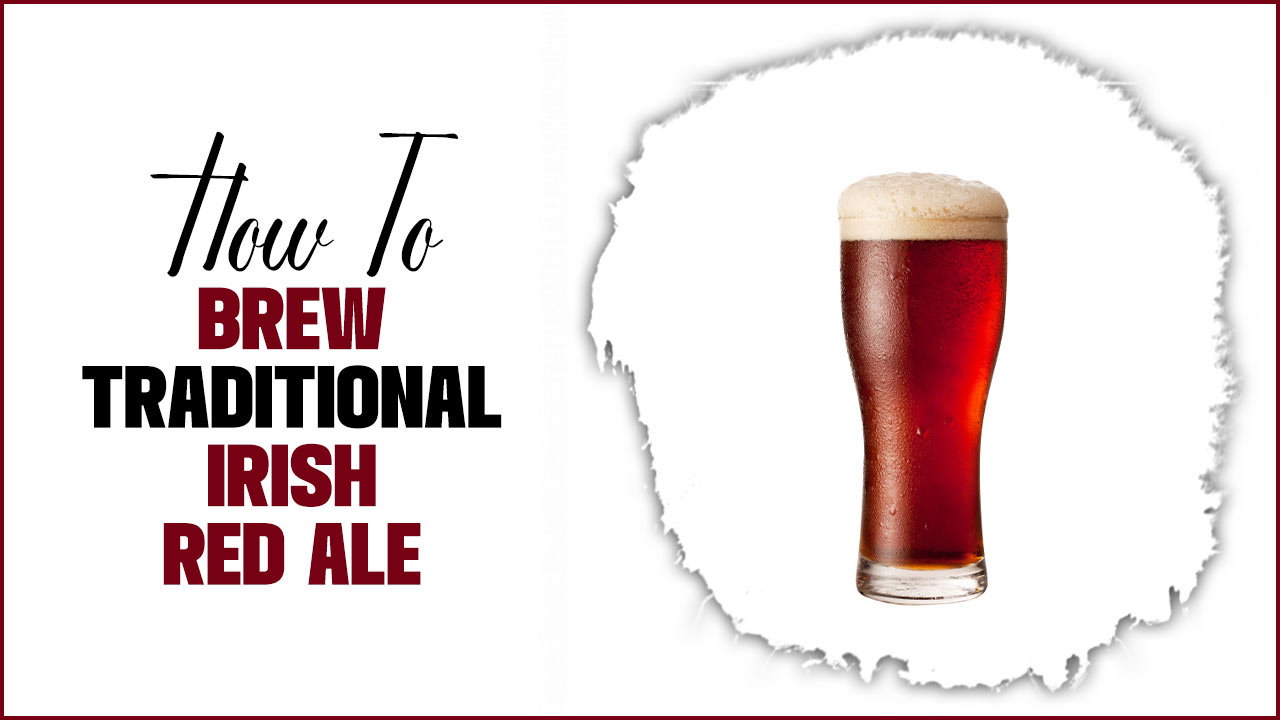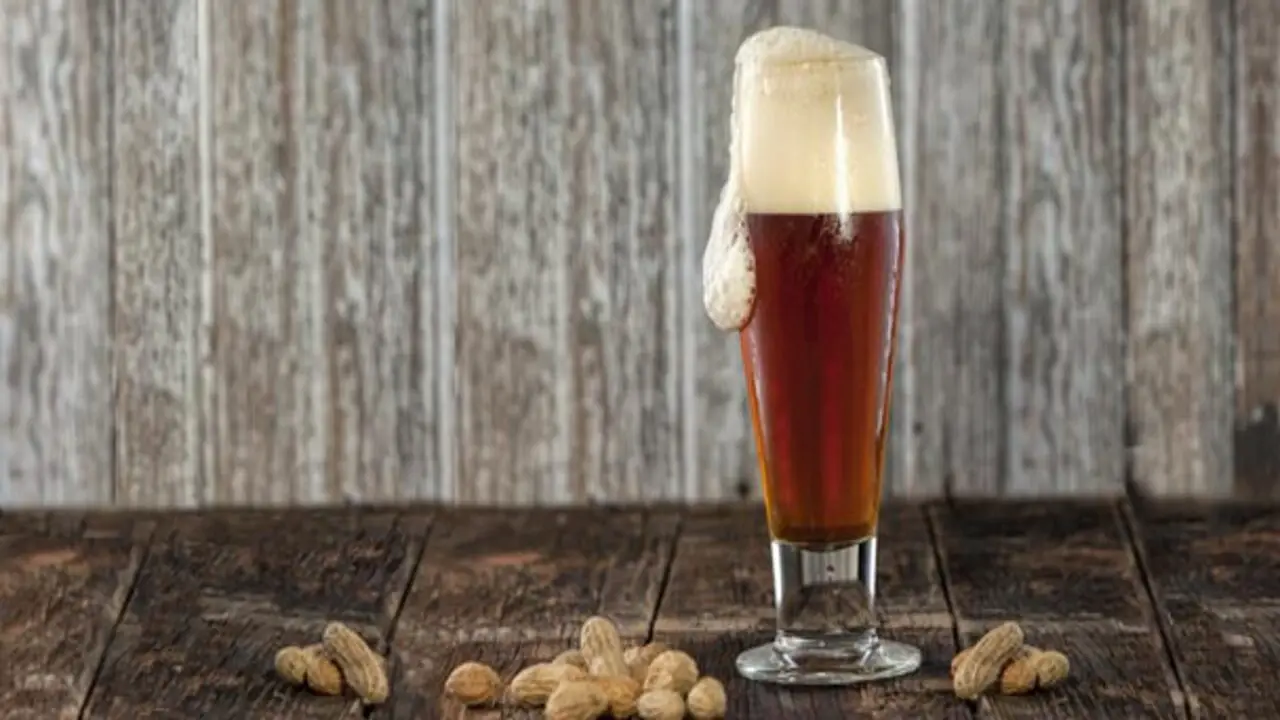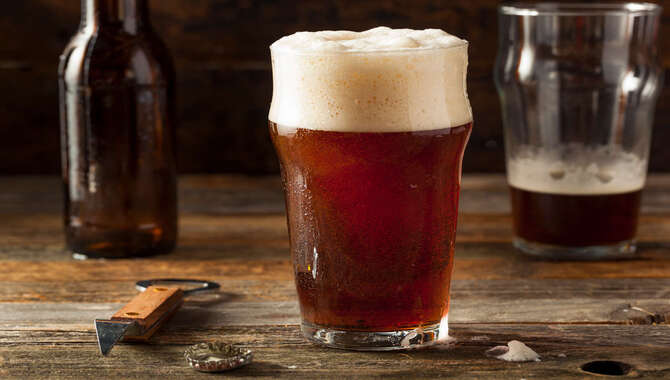Traditional Irish Red Ale is a beer style that originated in Ireland. It has a reddish-brown color, a malty and caramel flavor, and a moderate level of bitterness.
The beer is known for its smooth and balanced taste, making it highly drinkable and often enjoyed as a session beer. Here we will take you through every step of the brewing process on how to brew traditional Irish red ale.
We’ll cover everything you need to know, including selecting the perfect grains, choosing the right hops, preparing the mash, adding yeast, fermenting your brew, and finishing it off with finesse. Get ready to impress your friends with your brewing skills and enjoy the rich flavors of a perfectly crafted traditional Irish Red Ale.

History Of Irish Red Ale
Irish Red Ale has a rich history dating back to the 18th century in Ireland. The beer gets its distinct reddish color from the use of roasted barley, which also contributes to its malty sweetness and caramel flavors. Traditional brewing techniques involve using specific yeast strains and aging the beer in oak barrels, resulting in a unique flavor profile.
Over time, the popularity of Irish Red Ale has spread globally, with breweries worldwide producing their own interpretations of this classic style. Discover the fascinating history and delightful taste of Irish Red Ale.
How To Brew Traditional Irish Red Ale – Step By Step

Irish Red Ales, famed for their visually appealing copper-red hue achieved by the inclusion of roasted barley, are truly a treat for beer enthusiasts. The specialty malts used in brewing contribute to a rich and caramel-like sweetness, complemented by a subtle hop bitterness that perfectly balances the flavor profile.
With their smooth and medium-bodied mouthfeel, Irish Red Ales are universally cherished for their drinkability.Here are the full process of how to brew traditional Irish red ale.
1. Selecting The Grain
For brewing Traditional Irish Red Ale, it is essential to select the right grains. Base malts like Maris Otter or Irish Ale Malt provide a solid foundation for the beer’s flavor profile. To achieve the characteristic red color, speciality malts such as Crystal 60L or Special B can be added.
These speciality malts bring in rich caramel flavors and deepen the color of the beer. The grain bill should ideally consist of about 90% base malt and 10% speciality malts. By crushing the grains and mixing them with hot water in mashing, you can extract the sugars necessary for fermentation.
2. Choosing The Hops

Choosing the right hops is crucial for brewing a traditional Irish Red Ale. The hops you select will play a significant role in determining the flavor profile of your beer. For this style, it is common to use East Kent Goldings and Fuggles hops. These hops offer a mild to moderate bitterness and contribute delightful earthy, floral, or spicy aromas.
By combining these two hops, you can achieve a well-balanced maltiness and add complexity to the flavor of your brew. Adjust the amount and timing of hop additions according to your recipe and personal preferences. Consult with experienced brewers or follow your chosen recipe for the best results.
3. Preparing The Mash
To prepare the mash for brewing Traditional Irish Red Ale, starting with the right selection of grains is crucial. This beer style is renowned for its malty and caramel flavors, so choosing the appropriate base malt is key. Options like Maris Otter or Irish Ale Malt work well as base malts.
Additionally, to achieve the desired red color, be sure to include speciality malts like Crystal 60L or Special B in the grain bill. A recommended ratio is around 90% base malt to 10% speciality malts. Once you have the grains, crush them and mix them with hot water in mashing. This helps to extract the necessary sugars for fermentation.
4. Adding Yeast
Adding the yeast is a crucial step in brewing traditional Irish Red Ale. To achieve the desired flavor and characteristics, it’s important to choose a suitable yeast strain like Irish ale yeast or neutral ale yeast. Activate the yeast as instructed before adding it to the wort.
Sprinkle it evenly over the surface of the wort and cover the fermenter with an airlock or sanitized lid. Allow the beer to ferment in a cool, dark location for 1-2 weeks. The yeast will consume sugars during this fermentation period, producing alcohol and carbon dioxide.
5. Fermenting The Brew

After completing the boiling process, cool and transfer the wort into a fermentation vessel. Remember to sanitize all equipment for a clean fermentation environment. Introduce the yeast to the cooled wort by sprinkling or rehydrating it per package instructions.
Seal the fermentation vessel with an airlock to allow for the escape of gases during fermentation. Typically, fermentation takes 7-10 days, but refer to your recipe for specific instructions. Maintain a stable temperature in a cool, dark place throughout fermentation.
6. Finishing The Beer
After boiling, cool and transfer the wort to a fermentation vessel. Maintain cleanliness by sanitizing. Add yeast by sprinkling or rehydrating per package instructions. Seal the vessel with an airlock for gas escape. Fermentation takes 7-10 days. Follow the recipe instructions. Keep the vessel in a cool, dark place with consistent temperature control.
After fermentation, finish the beer before bottling or kegging. Use a secondary fermenter to clarify and settle sediment if desired. Be careful to avoid oxygen or disturbing sediment during transfer. Add ingredients or flavors like oak chips or fruit extracts for “dry hopping” or “secondary fermentation additions.”
Let the beer sit in the secondary fermenter for another week or two for flavor infusion. Finally, package the Irish Red Ale by bottling or kegging using appropriate techniques and equipment.
Storing Your Homebrewed Irish Red Ale

Preserving the quality and flavor of your homebrewed Irish Red Ale is essential. After brewing, it’s crucial to store the ale properly. Find a cool, dark place to keep your bottles away from direct sunlight and heat. Refrigeration should be avoided as it may lead to temperature fluctuations that can affect the taste.
Utilize temperature-controlled storage solutions like a beer fridge or cellar if possible. Take note of the expiration date and enjoy your Irish Red Ale before it expires. Follow specific storage recommendations from the recipe or brewing kit.
Food Pairings With Irish Red Ale
Irish Red Ale pairs well with traditional Irish dishes like beef stew, shepherd’s pie, and fish and chips. It also complements roasted meats like lamb and pork. This ale enhances the flavors of creamy cheeses like cheddar and gouda. For dessert, try pairing it with chocolate or caramel-based treats. And for a pub food experience, Irish Red Ale goes well with salted nuts, pretzels, or spicy buffalo wings.
How To Selecting The Right Ingredients For Brewing Irish Red Ale
When selecting the right ingredients for brewing Irish Red Ale, it is important to consider each component’s role in creating the desired flavors and characteristics. The base malt lays the groundwork for the beer, providing a sturdy foundation to build. Here are some tips to help you:
- Base Malts: Start with a base malt like Irish pale ale malt or Maris Otter, which provides a solid foundation for your brew.
- Speciality Malts: Add depth and color to your Irish Red Ale by incorporating specialty malts like roasted barley, crystal malt, or caramel malt. These will contribute to the beer’s signature reddish hue and caramel flavors.
- Hops: Choose hop varieties that balance the beer’s malty sweetness without overpowering it. Some hop options for Irish Red Ale include noble hops like East Kent Goldings or Fuggles, which provide a mild bitterness and earthy, floral aromas.
- Yeast: Use a yeast strain known for its clean fermentation profile and ability to accentuate malt flavors. Irish or British ale yeast are popular choices for Irish Red Ale.
- Water: Pay attention to your water quality and adjust if necessary. Irish Red Ale typically benefits from water with low mineral content, similar to the water found in the regions of Ireland where this beer style originated.
Conclusion
Brewing your own traditional Irish Red Ale can be a rewarding and enjoyable experience that allows you to delve into the art of beer-making. By following the step-by-step process on how to brew traditional Irish red ale, you can unlock the secrets of brewing this classic beer style and create a brew that is uniquely yours.
From carefully selecting the right grains and hops to understanding the importance of fermentation and finishing techniques, each step plays a crucial role in producing a delicious Irish Red Ale with its distinct flavor profile.
Once your brew is complete, it is essential to store it properly to maintain its flavor and quality over time. Additionally, consider pairing your homemade Irish Red Ale with some tasty food options, such as hearty stews or cheese platters, for an elevated drinking experience.
Frequently Asked Questions
1.What Hops Are Best For Irish Red Ale?
Ans: East Kent Goldings, Fuggles, and Willamette are popular hops for brewing Irish red ale. These hops impart traditional earthy and floral flavors to the beer.
2.What Temperature Do You Mash Irish Red Ale?
Ans: To achieve the desired characteristics, mash Irish red ale at 150-154°F (65-68°C). This temperature range extracts sugars and enzymes from the malt.
3.What Exactly Is An Irish Red Beer?
Ans: An Irish Red Beer is a classic beer style that originated in Ireland. It has a distinctive reddish-brown color and a moderate level of maltiness.
4.What Are The Ingredients In An Irish Red Beer?
Ans: Irish Red Beer is made using malted barley, hops, water, and yeast. It gets its reddish color and malty flavor from pale malt, roasted barley, and caramel malt. Traditional English or American hop varieties are used for bitterness and aroma.
5.Where Can I Get A Good Irish Red Beer?
Ans: You can find delicious Irish Red beer at local craft breweries, speciality beer stores, and online retailers. Additionally, Irish pubs and bars often serve authentic options.

I’m a writer and blogger who loves to talk about entertainment, culture, and relationships. I love to share my thoughts and insights on these topics, and I’m always looking for new ways to engage with my readers. I’m also a big fan of learning new things, so I’m always exploring new areas of interest.
